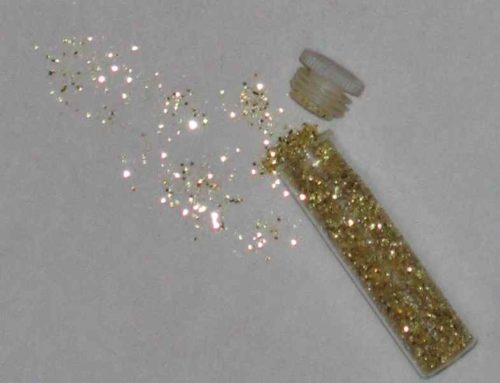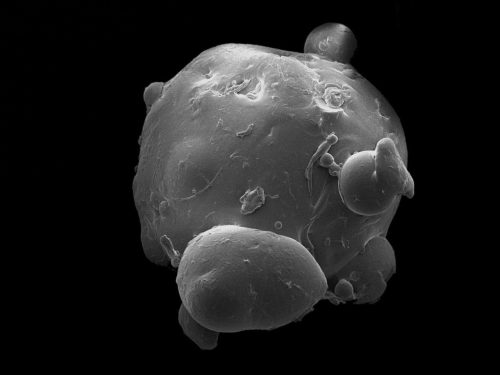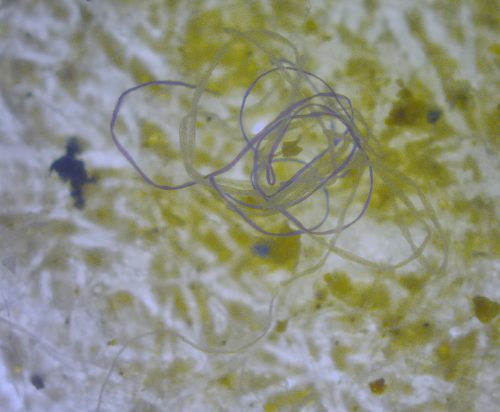Microplastics are tiny bits of plastic. Often they are too small to be seen. Microplastics pollute water in ways that we are just starting to learn more about.
Tiny bits of plastic, called “microplastics”, are made in two main ways. The first is when tiny bits of plastic are made on purpose. For example, the small plastic beads, called “microbeads”, that are often added to facewash or toothpaste. Another example is cloth such as Polar fleece, which is made of lots of tiny plastic threads. The other way microplastics are made is when bigger pieces of plastic break into smaller pieces.

(Source: Knoppen (Self-photographed), via Wikimedia Commons.)
Some microplastics can be seen with the eyes. Others are too small to see without a microscope. Unlike natural materials such as wood or paper, plastic breaks down very slowly. It can take thousands of years for plastic to break down completely. These particles (tiny bits) of plastic get into water sources like rivers, lakes, and oceans.

(Source: University of Exeter from United Kingdom (Andrew Watts Face to Face with Plastic), via Wikimedia Commons.)
Microplastics have been found in fish and other water animals, in tap water, and in bottled water. No one knows yet how the human body deals with these bits of plastic.

(Source: M.Danny25, via Wikimedia Commons.)
